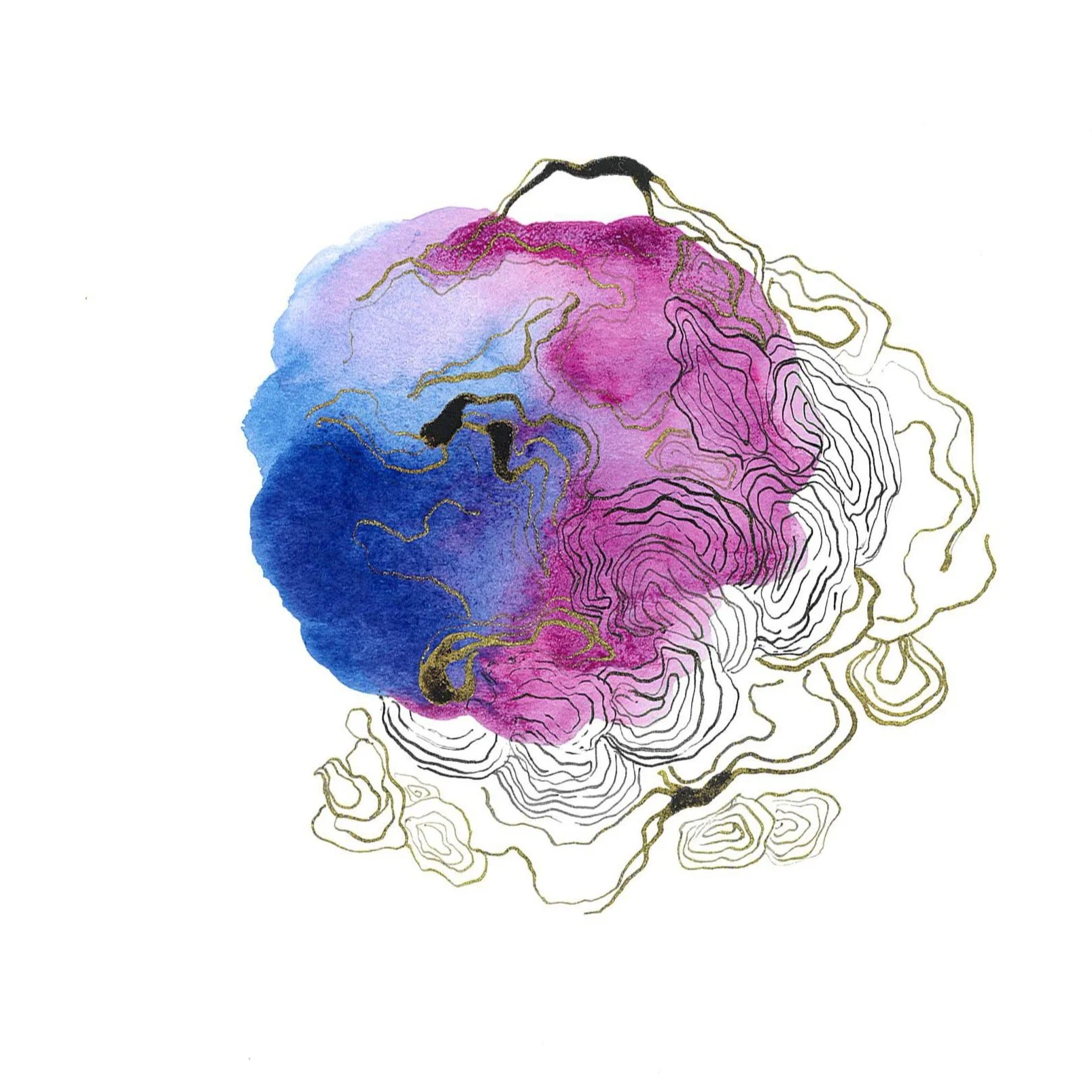This conversation explores why preserving art on Bitcoin matters—and what it means when the physical becomes permanent in a digital space.
Ordinals Spotlight: Preserving the Physical
When it comes to the digitisation process for artist Tami Rienzi, transforming her physical artwork into digital formats doesn’t fundamentally change her relationship with the piece. She maintains a deep connection to her art, whether it exists in the physical world or as a digital collectible. “I love my pieces in all their forms and textures; both the physical and digital realms have their own magic,” Tami reflects. However, digitizing her art brings an added layer of meaning. “I feel a sense of relief when I digitize my art because by inscribing it on the blockchain, I’m creating a legacy—a statement from my older self to future generations. It can never be destroyed.”
Her exploration into digital collectibles was inspired by her vision for the future of art. She believes that many people have yet to fully grasp the possibilities. “It’s the future of art, people don’t realize that yet,” she states. Digital art, to Tami, offers unparalleled accessibility, and the fact that it is spread across millions of nodes worldwide is something she finds truly astounding.
When it comes to ensuring that the texture, details, and essence of her physical pieces are preserved in the digital form, Tami relies on the tools available on Gamma. “I use the Gamma platform,” she shares, noting that her initial attempts to use other resources didn’t yield the best results—likely due to inexperience, as she humorously points out. Still, her dedication to translating her art into digital form has clearly paid off, with the blockchain providing a new way for her creations to be experienced.
Tami views her physical and digital artworks as deeply interconnected. In her practice, “the physical is the mother of the inscriptions,” she explains, indicating that her physical pieces often serve as the foundation for her digital creations. This connection between the two formats highlights the evolving relationship between traditional art and its digital counterparts.
For collectors who purchase digital versions of her art, Tami believes they gain something unique and enduring: “When you collect my digital art, you get something that lasts forever on the blockchain—no fading, no damage, just pure art preserved digitally. It is always accessible no matter where you are.” This permanence is one of the major benefits of digital art, offering a sense of security and preservation that traditional formats simply can’t match.
The shift to creating digital art, particularly using the Bitcoin blockchain, has also influenced Tami’s views on concepts like authenticity, originality, and ownership. “By inscribing my artworks as ordinals, every piece gets a unique ID that lives forever on the blockchain—like a digital DNA,” she says. This permanence and traceability mean her work will always be linked to her, creating a legacy that transcends the physical. In this way, her art isn’t just an object she’s created, but a lasting statement that can’t be altered or lost over time.
For artists looking to make the leap into digital formats, Tami offers simple but valuable advice: “Just start!!! The first ones will not be perfect, you will make mistakes, but as you keep doing it, you will improve.” She likens the process to running—“your first laps will be very slow, but as time goes by, your times will keep on improving. Consistency is the key.”
Tami Rienzi’s journey from physical to digital art showcases the transformative potential of blockchain technology in the art world, where permanence, accessibility, and legacy are redefined in exciting new ways.

